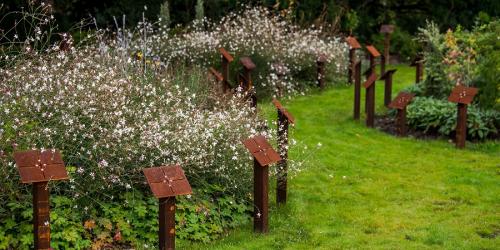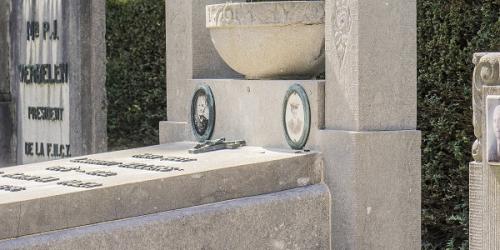
The cemetery of Brussels (in Evere) is the largest cemetery in the Brussels-Capital Region. It covers 38 hectares.
Trees are currently being cut down at the cemetery. As it is a mobile yard, the yard is not demarcated. To ensure their safety, visitors are asked not to enter the yard area.
The cemetery tells the history of Belgium through famous figures such as François Van Campenhout, composer of the Brabançonne (Belgian national anthem), Jean Volders (see the section entitled 'Sights') and the mayors of the City of Brussels. Monuments also recall significant events in the country's history: battlefields, a memorial paying tribute to the victims of the fire in the Innovation department store, and more.
"Our cemetery has to look like a big park", said Jules Anspach, Mayor of the City in 1877. There is an abundance of fauna and flora. Fruit trees, beehives and meditation ponds adorn this green lung, located in a highly urbanised area.
Commemorative lawns in honour of British soldiers who fell in World War I and II
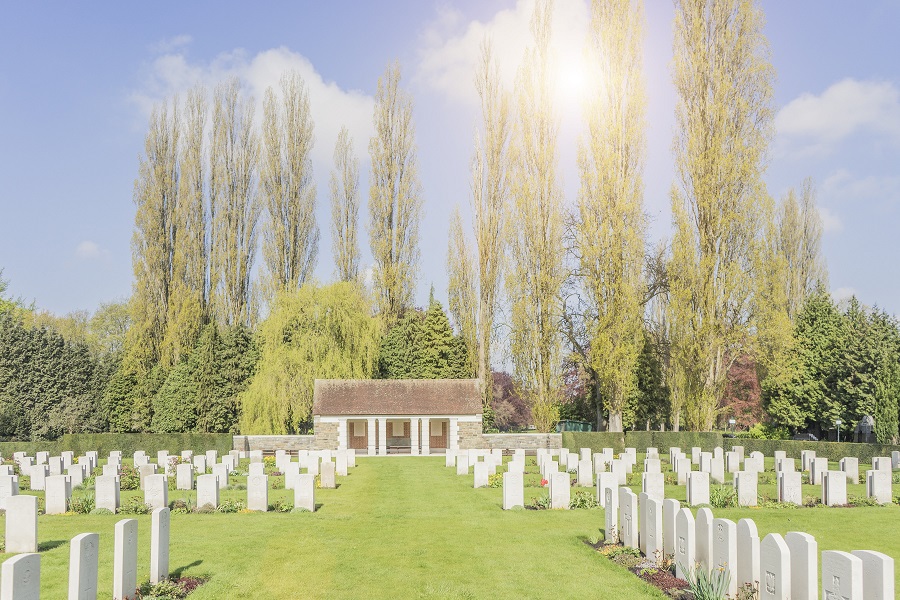
Commemorative lawn for British and some Allied soldiers who died in Brussels and the surrounding area. The soldiers of the First World War lie around a cross with a sword. The fallen of the Second World War are buried in line with the lawn. The shelter at the end of the lawn has a metal plaque bearing a map and an account of 'The liberation of Belgium and the Netherlands and the advance into Germany', September 1944 - May 1945.
Jean Volders (1855-1896)
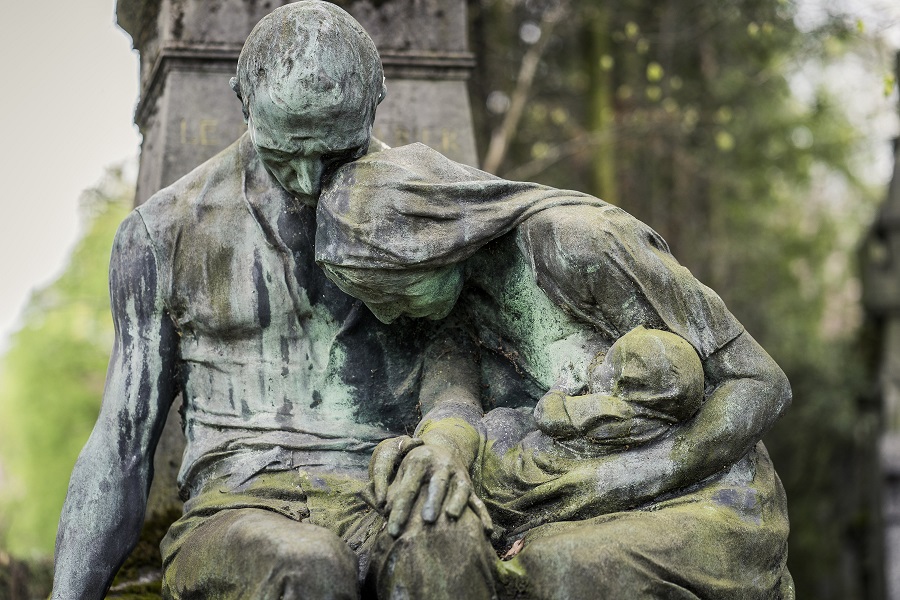
Jean Volders founded the Parti socialiste belge (Belgian Socialist Party), formerly the Parti ouvrier belge (Belgian Workers' Party) together with César de Paepe. A committed journalist, he became the editor-in-chief of the party's newspaper, Le Peuple. He actively advocated universal suffrage in his articles.
The inscription on his tomb, which reads 'Il aimait le peuple, le peuple le pleure' (He loved the people, the people weep for him), perfectly sums up the emotion that swept the entire country when his death was announced on 13 May 1896. Huge numbers of working people followed the funeral procession carrying his remains from the Maison du Peuple to the cemetery of Brussels.
The bronze monument on his tomb depicts working people weeping.
Adolphe Max (1869-1939)
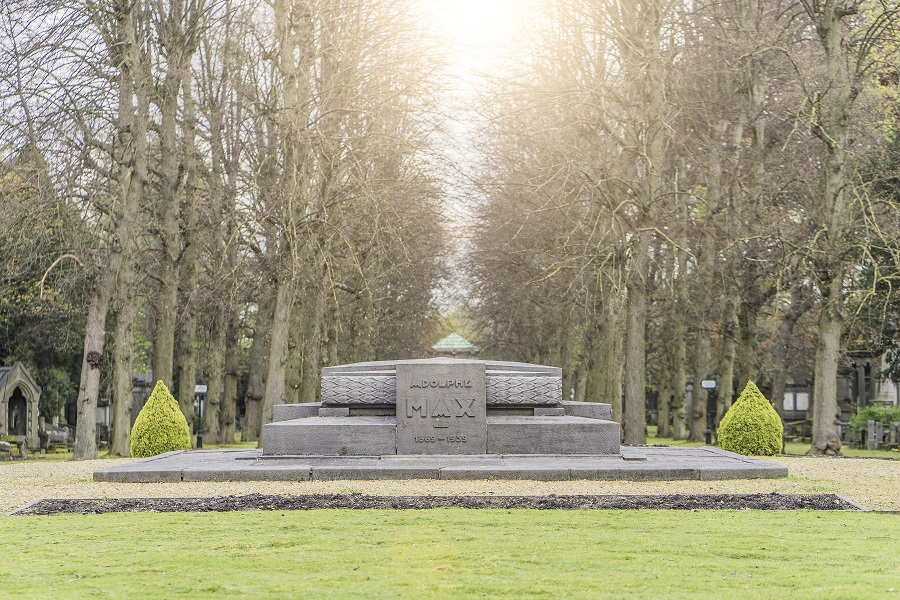
When the cemetery came into use, 900 tombs were transferred from old cemeteries. The most striking of these were positioned on the roundabouts and along the main avenue. For example, the tomb of the Mayor Charles De Brouckère was placed on the Grand Rond-Point (Great Roundabout). He is followed by Jules Anspach and other mayors of Brussels. This roundabout became known as 'The Mayors' Roundabout'. Adolphe Max lies at its centre. A way of paying tribute to his fight against the German occupiers during the First World War.
Tomb known as 'The Daltons'
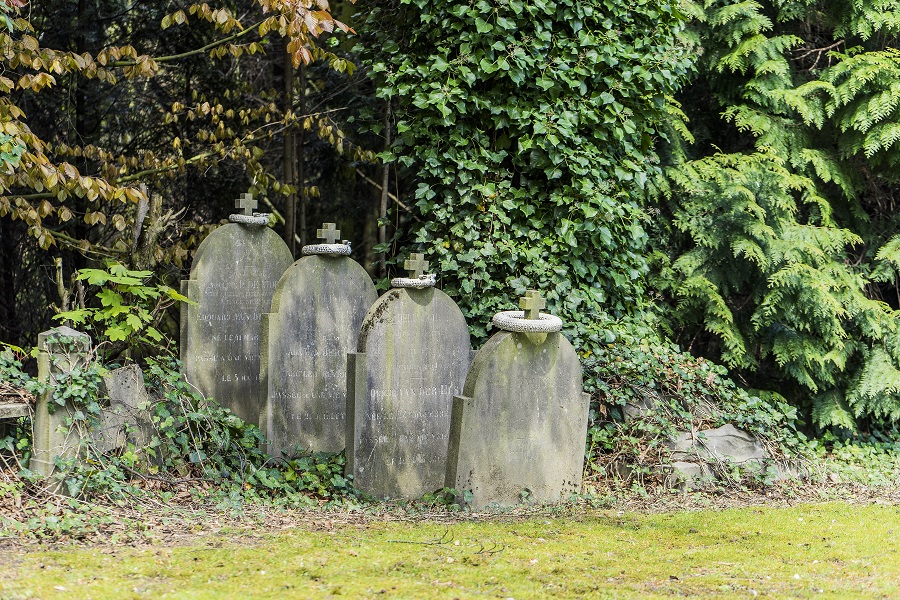
The concession belongs to the family of the painter Cesare Delle Acqua. The series of four headstones of different sizes earned it the nickname 'The four Dalton brothers'.
Tomb of François Verheven
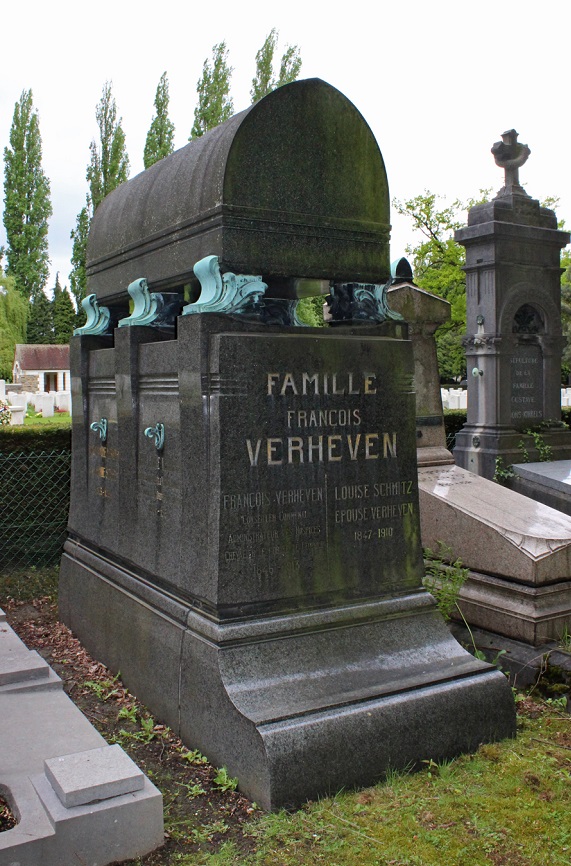
The cemetery contains many works created by leading architects such as Ernest Acker (1852-1912), Adrien Blomme (1878-1940), Joseph Caluwaers (1863-1948), Eugène Dhuicque (1877-1955), Emile Janlet (1839-1918) and Henry van de Velde (1863-1957). Victor Horta (1861-1947) designed an original tomb for François Verheven. This monument stands on the Grand Avenue, along the commemorative lawn for British soldiers (Lawn 10).
- Brochure - cemetery of Brussels (1.42 MB) (in French)
- Brochure - cemetery of Brussels (1.42 MB) (in Dutch)
Facebook page of the cemeteries of the City of Brussels:













